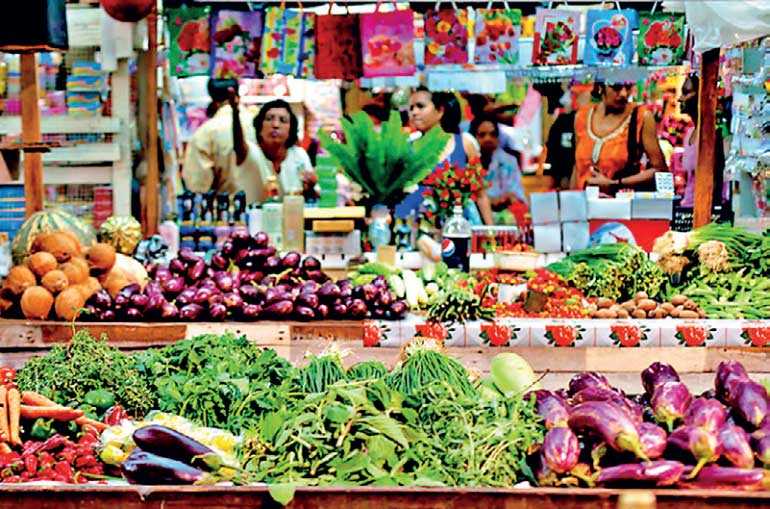Monday Dec 15, 2025
Monday Dec 15, 2025
Tuesday, 11 May 2021 00:17 - - {{hitsCtrl.values.hits}}

International food commodity prices rose for the 11th consecutive month in April, with sugar leading the increase and cereals resuming their upward trend, the Food and Agriculture Organization of the United Nations (FAO) reported last week.
The FAO Food Price Index averaged 120.9 points in April, 1.7% higher than March and 30.8% higher than its level in the same month last year. The index, which tracks monthly changes in the international prices of commonly-traded food commodities, reached its highest level since May 2014, and in nominal terms is 12% below its all-time peak in February 2011.
The FAO Sugar Price Index increased 3.9% during the month to reach levels nearly 60% higher than in April 2020, with concerns over slow harvest progress in Brazil and frost damage in France heightening concerns over tighter global supplies.
The FAO Vegetable Oil Price Index rose 1.8% in April as international palm oil quotations rose on concerns that production growth in major exporting countries would be slower than expected. Soy and rapeseed oil values also climbed further, while sunflower oil prices contracted moderately.
The FAO Meat Price Index rose 1.7% from its March value, with bovine, ovine and pig meat quotations underpinned by solid demand from East Asia. Poultry meat prices remained steady, reflecting generally balanced global markets.
The FAO Cereal Price index rose 1.2% in April, reversing a short-lived drop in March to stand 26% above its April 2020 level. Maize prices rose 5.7% - to reach a level 66.7% higher than a year earlier - driven by smaller-than-anticipated planting intentions in the United States of America as well as concerns about crop conditions in Argentina, Brazil and the U.S.A. International wheat prices were generally steady, while quotations for rice, barley and sorghum softened.
The FAO Dairy Price Index increased 1.2% from March, with quotations for butter, cheese and skim milk powder rising due to solid import demand from Asia.
New forecasts for global cereal output, utilization, trade and stocks
FAO also published a set of updated forecasts in the new Cereals Supply and Demand Brief. Global cereal production in 2020 is forecast at 2 767 million tons, a 2.1% increase from the previous year. World cereal utilization for 2020/21 is pegged at 2 783 million tons, an increase of 2.7%, led by coarse grains, with the growth mostly reflecting greater-than-earlier-anticipated feed uses in China and the U.S.A.
FAO revised down its forecast for world cereal stocks by the close of the 2021 seasons to 805 million tons on likely drawdowns of maize inventories in China and the U.S.A., representing a 2.3% decline from their opening levels. The global cereals stock-to-use ratio is expected to stand at 28.3%, a seven-year low.
World trade in cereals in 2020/21 is forecast to reach 467 million tons, a year-on-year expansion of 5.9%, with growth foreseen as fastest for coarse grains, then rice and lastly wheat.
FAO also offered its first supply and demand outlook for wheat in the season ahead, 2021/22, forecasting production at 778.8 million tons, or 0.5% more than the 2020 estimate, buoyed by an anticipated 6% yearly increase in the European Union’s output.
Wheat utilization is predicted to increase by 0.9% to 770 million tons in the new season while the preliminary forecast foresees world wheat stocks growing 3.0% to reach a record level of 293 million tons by the close of seasons in 2022, led by inventory expansion in China even as stocks in the rest of Asia and Africa could reach their lowest levels since 2012/13. Global wheat trade in 2020/21 (July/June) is forecast to contract by 1.8% year-on-year to 185 million tons, with expectations of reduced shipments from Australia, Canada, the Russian Federation and the U.S more than offsetting expanded exports from Argentina and the EU. Early prospects for global coarse grains production in 2021 indicate a likely third consecutive year of growth, led by increased planted areas anticipated in Brazil, China, Ukraine and the U.S.A. as well as recovering yields in the EU. Sizeable production increases are also forecast in South Africa and neighboring countries.